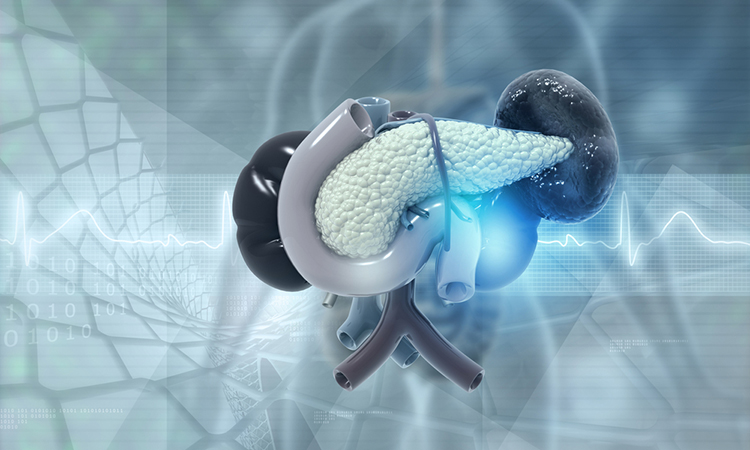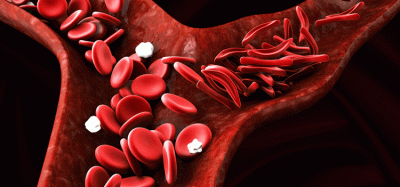Discovery of CAFs’ origin gives new direction for pancreatic cancer
Posted: 1 February 2023 | Izzy Wood (Drug Target Review) | No comments yet
US researchers discovered a type of cell involved it pancreatic cancer and sheds light on the origin of cancer-associated fibroblasts (CAFs).


New research from the Medical University of South Carolina (MUSC), US, showed that a type of cell that plays a key role in pancreatic cancer can trace its origin back to a structure that forms during embryonic development.
This new data, published in Nature Communications, is the first to show the cellular origin of normal pancreatic fibroblasts and cancer-associated fibroblasts (CAFs) that influence tumour progression. The findings open the door for new therapeutic targets for pancreatic cancer, which remains challenging to treat.
“We are still learning about the cells that make up the tumour microenvironment. New therapies often take decades to develop because we first must understand tumour biology. Our recent discovery about the origin of cancer-associated fibroblasts will help the pancreatic cancer field to progress,” said Dr Michael Ostrowski, the WH Folk Endowed Professor in Experimental Oncology.
Biomarkers aren’t just supporting drug discovery – they’re driving it
FREE market report
From smarter trials to faster insights, this report unpacks the science, strategy and real-world impact behind the next generation of precision therapies.
What you’ll unlock:
- How biomarkers are guiding dose selection and early efficacy decisions in complex trials
- Why multi-omics, liquid biopsy and digital tools are redefining the discovery process
- What makes lab data regulatory-ready and why alignment matters from day one
Explore how biomarkers are shaping early drug development
Access the full report – it’s free!
While pancreatic cancer is driven by tumour cells, fibroblasts are cells that control the microenvironment around the tumour. “A healthy pancreas contains very few fibroblasts. However, there is a drastic increase in the number of fibroblasts when a tumour forms in the pancreas and fibroblasts play important and complex roles in how the disease progresses,” Dr Lu Han added, lead author of the study.
Targeting CAFs holds exciting potential for therapeutic benefits. “Understanding the specific factors within each CAF subtype will help us direct future therapeutic design. Ideally, we want to be able to promote the CAFs that reduce cancer cell growth and inhibit the tumour-promoting CAFs,” explained Han.
The potential CAF origins include pancreatic epithelial cells, the bone marrow and pancreatic resident fibroblasts – fibroblasts in the normal adult pancreas. They formally tested that hypothesis by engineering elegant mouse genetic models of pancreatic cancer.
“What we found was a bit surprising. The bone marrow and epithelial cells only had minimal contributions to CAFs. We found that both resident fibroblasts and CAFs came from the splanchnic mesenchyme, a layer of cells in an embryo during early development,” Han said.
This new finding about the foetal origin of the pancreatic fibroblasts suggested that the different CAF subtypes found in pancreatic cancer are likely caused by the tumour microenvironment driving the diversification of the fibroblasts.
Next, they studied whether the CAFs also had the same gene signature of their foetal origin. Figuring out the gene signature similarities could offer novel insights into CAF heterogeneity and the complex roles CAFs play in pancreatic cancer progression.
The gene signature studies revealed two distinct groups of genes. The normal pancreatic fibroblasts shared a group of genes with the splanchnic mesenchyme that is potentially important for normal organ maintenance. The CAFs shared a different group of genes, which potentially play a role in promoting rapid cell multiplication. This observation was seen in their mouse models and human pancreatic tissues, suggesting that some foetal development programmes are turned back on in the fibroblast lineage during tumour development.
“During tumour development, the splanchnic-derived fibroblasts quickly multiply and become a large portion of the pancreatic cancer tissue mass. The importance of the foetal development programmes in the CAFs is a really exciting direction and has not been explored before this study,” concluded Han.
Related topics
Disease Research, Immuno-oncology, Immuno-oncology therapeutics, Oncology, Targets, Therapeutics
Related conditions
Pancreatic cancer
Related organisations
Medical University of South Carolina (MUSC)
Related people
Dr Lu Han, Dr Michael Ostrowski








